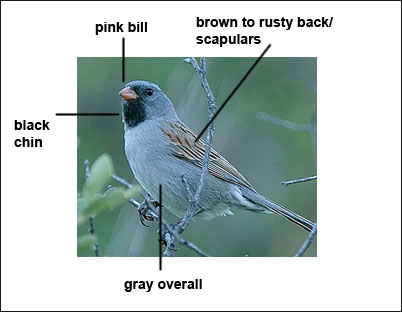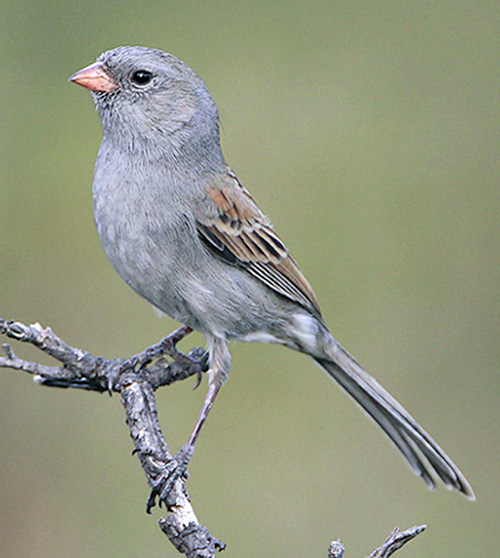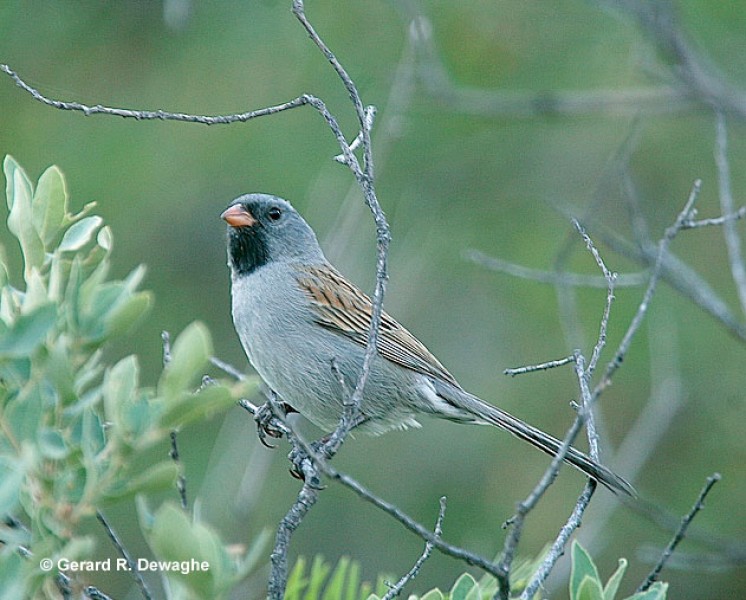The Black-chinned Sparrow inhabits arid, brushy, mountain slopes of the southwestern U.S. It is most common around the outer Los Angeles area. California’s Black-chinned Sparrows are migratory, though winter movements of Black-chinned Sparrows downslope into desert grasslands are typical of populations in Arizona and New Mexico.
Sagebrush is a typical plant in which Black-chinned Sparrows build their nest. After nesting, when the young have fledged, the young often gather together into small flocks.
On this page
Description of the Black-chinned Sparrow
BREEDING MALE
The Black-chinned Sparrow has a plain gray head and underparts, a brown, streaked back, and a pink bill. Males have a small black face and throat patch. Length: 6 in. Wingspan: 8 in.

Female
Females have a gray face and throat.
Seasonal change in appearance
Males lose the black face and throat in the fall.
Juvenile
Juveniles have streaked underparts.
Habitat
Black-chinned Sparrows inhabit arid slopes and sagebrush.
Diet
Black-chinned Sparrows eat insects and seeds.

Photograph © Greg Lavaty.
Behavior
Black-chinned Sparrows forage on the ground, generally rather slowly.
Range
Black-chinned Sparrows breed throughout parts of the western and southwestern U.S. They winter in the southwestern U.S. and Mexico. The population appears to be stable.
Fun Facts
Black-chinned Sparrows gather in small flocks in the fall and winter.
There are two U.S. subspecies of Black-chinned Sparrows, with central California birds being slightly darker.
Vocalizations
The song consists of a series of slurred notes. A soft “siss’ call is also given.
Similar Species
Black-throated Sparrow
The Black-throated Sparrow has a strong light and dark facial pattern, more extensive black on throat.
Nesting
The Black-chinned Sparrow’s nest is a cup of weeds, grass, and fibers and is lined with finer materials. It is placed low in a sagebrush or shrub.
Number: Usually lay 2-4 eggs.
color: Pale bluish in color, sometimes with darker markings.
Incubation and fledging:
The young hatch at about 13 days, though the age at which they fledge is not well known.
Bent Life History of the Black-chinned Sparrow
Bent Life History information will be added soon.


